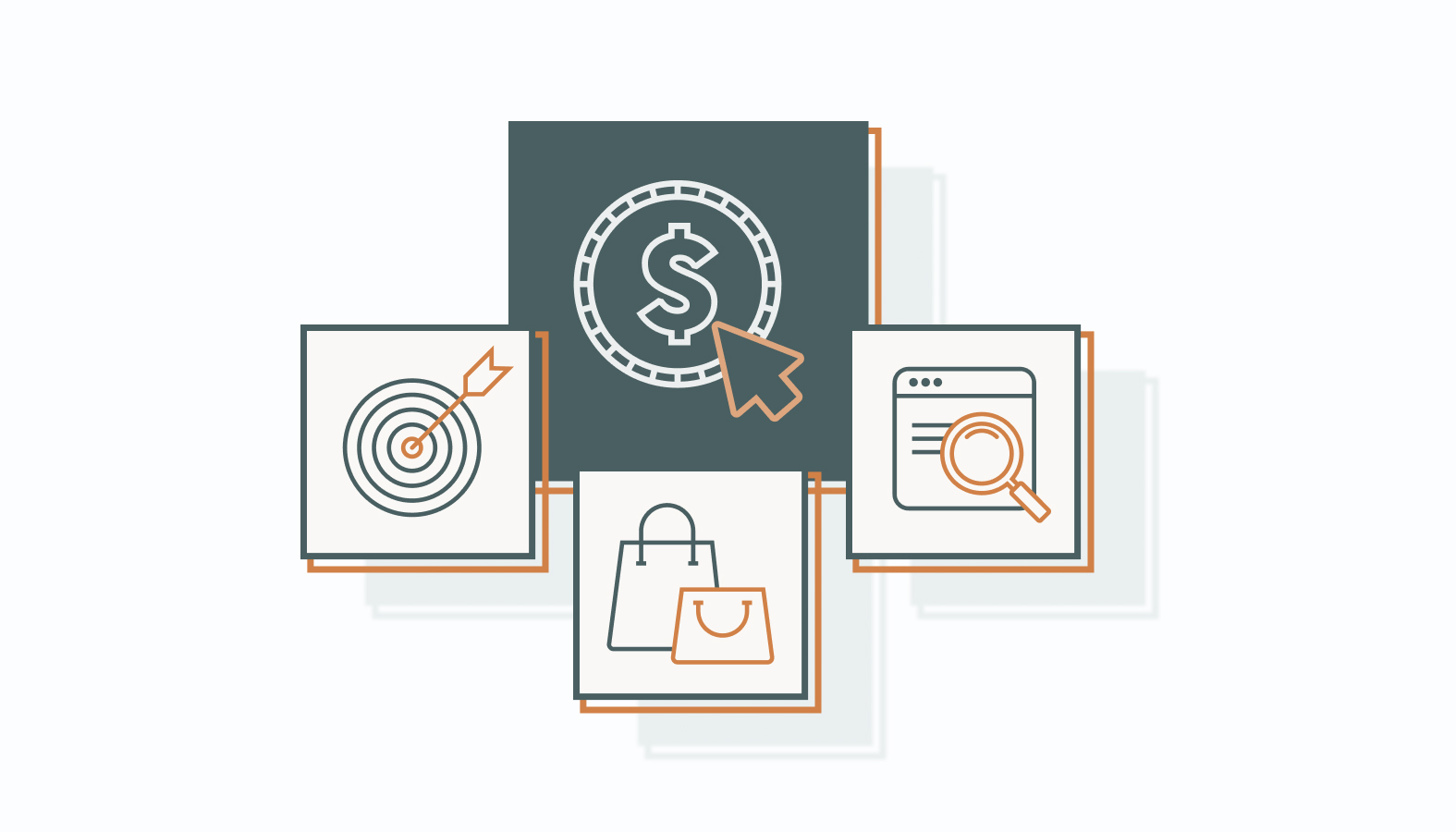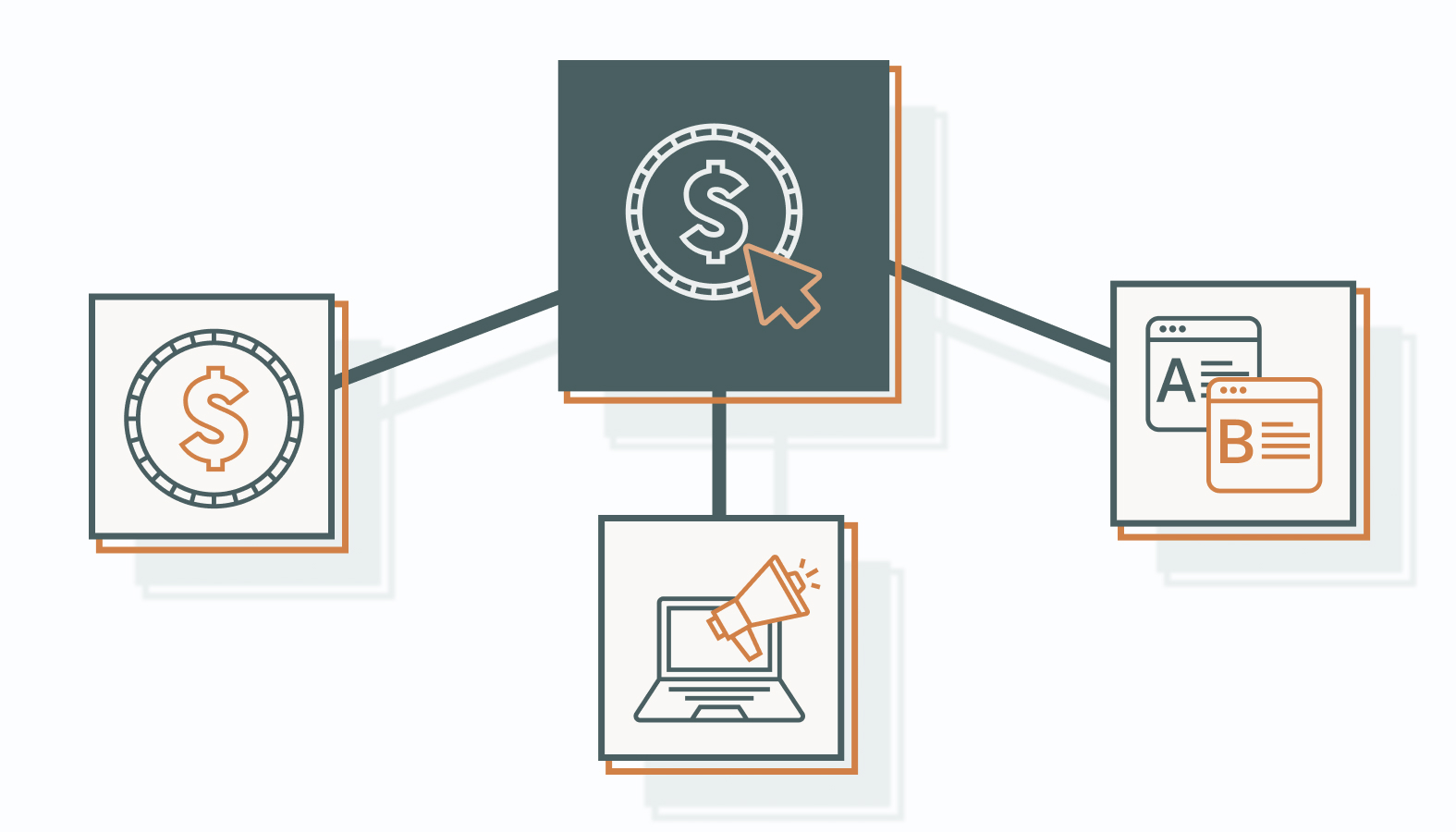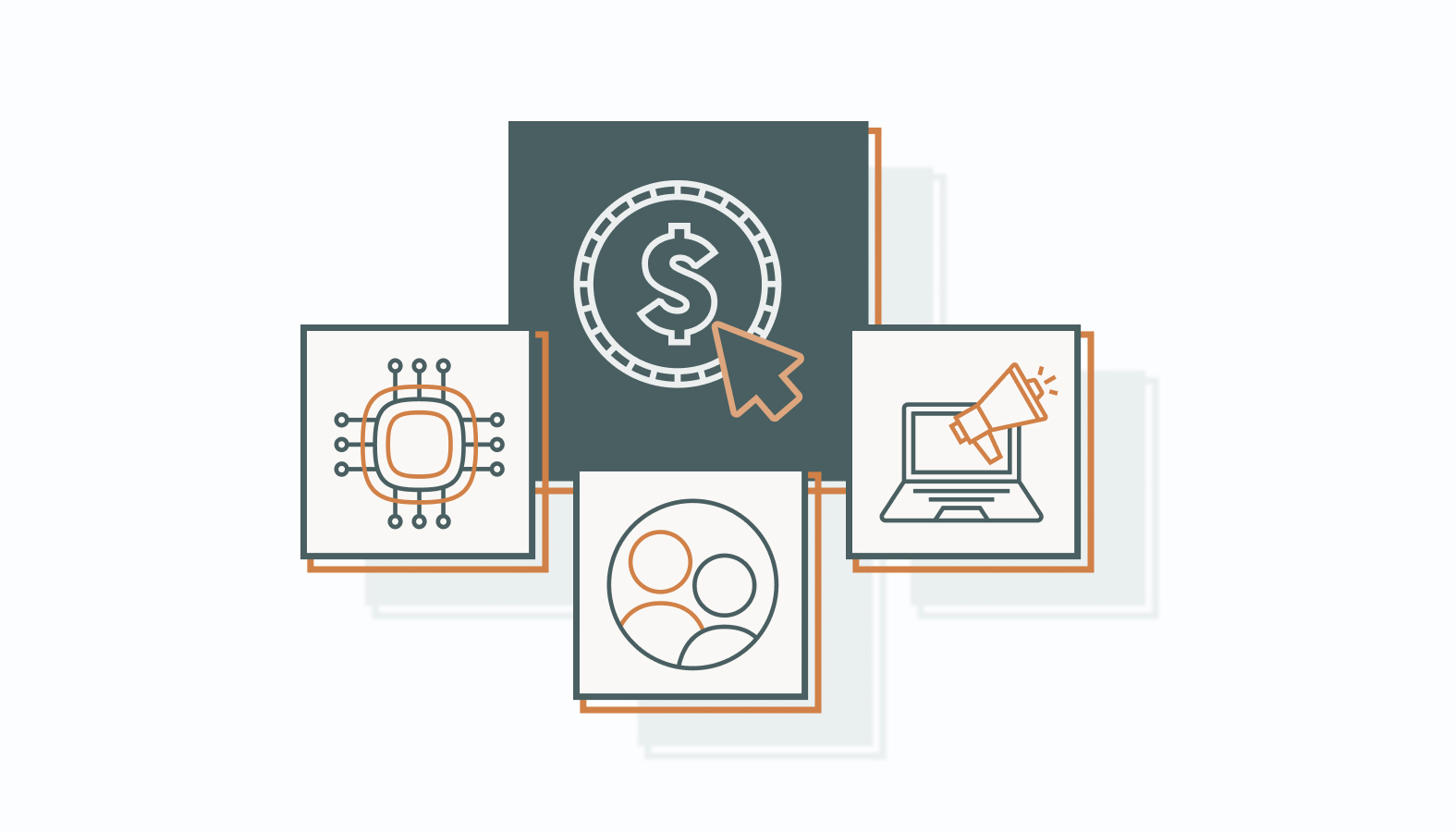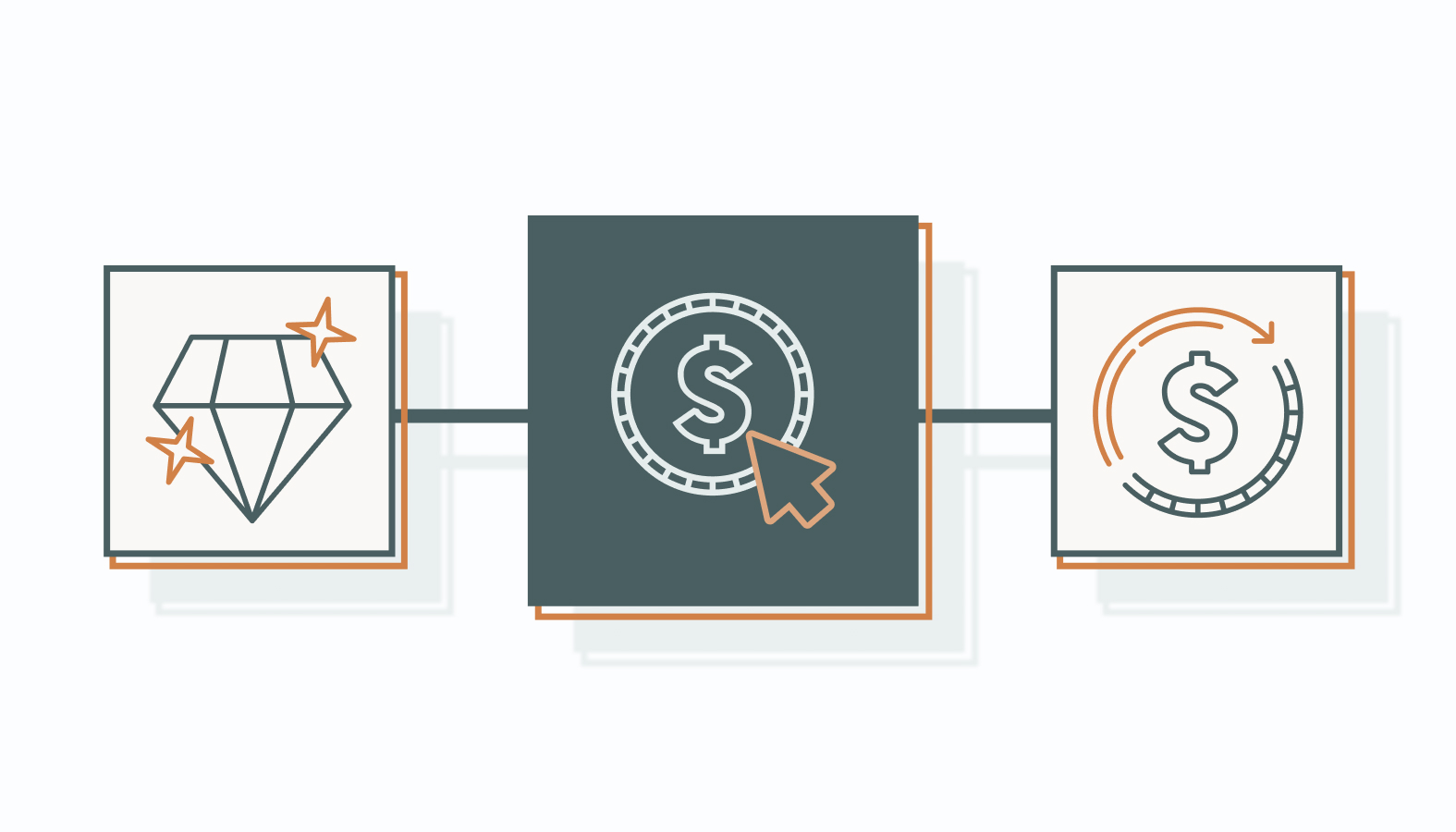If you’re running ads but not seeing consistent returns, the problem probably isn’t the platform — it’s the strategy.
A PPC marketing strategy is more than setting a budget and hitting “go.” It’s about making the right choices before the first dollar is spent: who you’re targeting, how you’re bidding, what you’re saying, and where your ads lead. Without that groundwork, even well-funded campaigns can stall.
In this article, we’ll outline a straightforward approach for building, optimizing, and scaling PPC campaigns that convert clicks into tangible outcomes.
What is PPC Marketing and Why Does It Matter?
PPC (pay-per-click) is one of the most direct and measurable ways to generate demand and drive conversions. You only pay when someone clicks, making it performance-focused from the start.
Now with built-in targeting, budget controls, and data-rich reporting, PPC gives you complete visibility into what’s working, what’s not, and where to optimize next.
Whether you’re running Google Search, Meta ads, or LinkedIn campaigns, PPC lets you test, learn, and improve — without guessing or waiting months for traction.
But what really makes PPC marketing a crucial strategy for modern businesses? Let’s break down the core advantages and compare them to other approaches.
1) Get Instant Results with PPC Advertising
One of the defining strengths of a solid PPC strategy is speed. Once your campaigns are live, your ads can start appearing in front of potential customers within minutes.
This is a game-changer for businesses that need instant visibility for product launches, time-sensitive promotions, or events where first impressions matter most.
For example, if your e-commerce site is having a flash sale, a PPC campaign can drive traffic and conversions the same day.
Or, if a competitor’s product suddenly goes out of stock, PPC lets you swoop in and capture that demand before organic SEO efforts would ever have a chance to catch up.
2) Reach the Right Customers with Targeted PPC Campaigns
Modern PPC tactics offer laser-focused targeting. You’re not just casting a wide net and hoping for the best. You’re focusing on the exact demographics, interests, and behaviors that matter to your business.
Whether you want to target new parents in Chicago, B2B decision-makers in the SaaS industry, or outdoor enthusiasts aged 25-40, PPC platforms like Google Ads and Meta Ads offer rich audience targeting options.
The result? Higher conversion rates and more meaningful engagement, because your message is reaching the people most likely to take action.
3) Control Your Spending with Flexible PPC Budgets
One of the beauties of PPC marketing strategy is control. You set your daily or monthly budget limits, ensuring you never spend more than you’re comfortable with. This flexibility makes PPC accessible to both startups and established enterprises.
But control doesn’t stop at just setting limits.
With smart bidding strategies and ongoing optimizations, you can allocate your budget to the highest-performing keywords, times, and audiences.
The best PPC campaigns are continually refined to extract every last drop of ROI.
4) Measure and Improve Your Marketing with PPC Data
PPC isn’t a guessing game. Every click, impression, and conversion is tracked down to the finest detail with tools like Google Analytics, Google Ads’ dashboard, and third-party platforms. This data-driven environment empowers marketers to make informed decisions—adjusting bids, pausing underperforming ads, and doubling down on what works.
Continuous analysis isn’t just for show; it’s the backbone of maximizing ROI. By regularly reviewing performance metrics, you can fine-tune your campaigns to meet evolving goals and market conditions.
5) Amplify Brand Visibility with Paid Placement
While PPC is often celebrated for its conversion-driving capabilities, it’s also a powerful tool for brand visibility. Even if users don’t click your ad, your brand is still visible at the top of search results or in prominent display placements, gradually building recognition and trust over time.
PPC doesn’t operate in a vacuum, either. When combined with content marketing, SEO, and social media efforts, it amplifies your brand’s reach across channels, keeping you top-of-mind and accelerating the impact of your broader marketing initiatives.
With PPC, you’re not just hoping for results. You’re engineering them, in real time. That’s why a well-crafted ppc marketing strategy is a critical lever for any business looking to grow, adapt, and win in today’s crowded digital landscape.
Mastering Your PPC Marketing Strategy
To truly unlock PPC’s potential, you need more than a budget and some keywords. You need a strategy that aligns every campaign with your business goals and maximizes every dollar. A well-built PPC marketing strategy does more than drive clicks; it drives outcomes.
Below, we break down the strategic pillars that separate high-efficiency operators from the rest.
Set Clear and Achievable Goals
Before you touch an ad platform, set clear, measurable goals. Avoid vanity metrics: “more clicks” won’t pay the bills. Focus on outcomes that matter to your business, like:
- “Lower customer acquisition cost (CAC) by 20% this quarter.”
- “Generate 200 SQLs from paid channels this month.”
- “Increase return on ad spend (ROAS) by 1.5x by year-end.”
Specific, time-bound objectives do more than guide targeting and bidding. They create accountability, help you prioritize tests, and make it easier to scale what’s working.
Position Your Brand to Be Seen and Remembered
PPC isn’t just a conversion engine; it’s also a stage. If your strategy includes brand-building, focus on placements that drive impressions and recall:
- Programmatic Display Campaigns: Reach users contextually while they consume relevant content.
- YouTube Pre-Roll Ads: Tell your brand story in 6 to 30 seconds before users watch organic content.
- Branded Paid Search: Defend your name on the SERP and reinforce brand authority.
Brand visibility isn’t about flooding impressions. It’s about maintaining consistent, recognizable messaging that sticks. Utilize unified creative and messaging across all ad types to establish brand memory and trust.
Drive Conversions with Buyer-Ready Campaigns
For campaigns with performance KPIs, such as leads, sales, and sign-ups, the foundation is intent.
Paid search campaigns targeting transactional or decision-stage keywords (“compare,” “demo,” “pricing”) put you in front of buyers ready to move.
Make sure your PPC funnel includes:
- Lead Gen Campaigns with Smart Forms: Integrated lead extensions or embedded form-fills reduce friction and boost conversion rates.
- Mid-Funnel Nurture Ads: Use LinkedIn Conversation Ads or Meta lead gen to re-engage and educate high-potential users.
- Product-Driven Ads: In e-commerce, run Google Shopping or Performance Max campaigns to meet users where they browse and compare.
Tactics like these not only generate conversions, they accelerate time-to-purchase by surfacing the right message at the right moment.
Conduct Comprehensive Keyword Research
Every high-performing PPC campaign starts in the same place: thoughtful, strategic keyword planning. Precision here determines whether you reach the right buyers or waste spend on noise.
Start with High-Intent Keywords
Use tools like Google Keyword Planner, SEMrush, or Ahrefs to identify keywords that have both volume and clear commercial intent. You’re not just chasing traffic, but also targeting searchers who are ready to compare, buy, or sign up.
- Prioritize terms that reflect purchase-ready behavior (“best CRM for small teams” beats generic terms like “CRM”).
- Analyze competitors to identify missed opportunities or areas where you can outrank them.
- Revisit and refine regularly to stay aligned with shifting search trends.
A focused keyword list improves click-through rates, raises quality scores, and drives more qualified conversions.
Use Negative Keywords to Protect Your Budget
Not every search deserves your budget. Negative keywords help you block irrelevant or low-intent queries, keeping your spend focused on what actually converts.
- Scan search term reports for off-target queries and add exclusions fast.
- Filter out career seekers (“jobs,” “internships”) or irrelevant verticals.
- Avoid competitor brand names if they negatively impact conversion rates.
Regular cleanup is non-negotiable. It sharpens your targeting and ensures your budget works harder.
When your PPC strategy is grounded in intent-driven keyword targeting and proactive filtering, every click has a job to do—and delivers measurable results.
Outsmart the Competition, Outperform in the Feed
Great PPC campaigns don’t exist in a vacuum; they’re shaped by context. That means knowing where your competitors are spending their money, what messages they’re promoting, and where they’re falling short.
Combine those insights with standout creative, and you’re no longer just competing. You’re leading.
Find the Gaps. Then Fill Them.
Your competitors are bidding for the same attention you are. So, why guess when you can see what they’re doing?
Use tools like SEMrush, SpyFu, or Ahrefs to uncover:
- The keywords they’re targeting
- Their top-performing ad copy
- Budget patterns across networks and formats
Layer in Google’s Auction Insights to see who’s consistently outranking you and when. And don’t ignore Meta’s Ad Library: it’s a goldmine for understanding how others in your space are positioning themselves across audiences.
Look for weak spots:
- Keywords they’ve overlooked
- Generic messaging that lacks urgency
- Formats they’re not using (video, interactive, etc.)
These aren’t just gaps; they’re openings. Own them with sharper targeting, more relevant offers, and creative that earns the click.
Craft Ads that Win Attention
You’ve only got seconds to get the right user to take action. That means your creative needs to do more than exist—it needs to persuade.
What high-performing ad copy does:
- Leads with outcomes, not features (“Cut onboarding time in half” beats “Feature-rich platform”)
- Includes direct CTAs like “Book a demo,” “Try it free,” or “Build your quote.”
- Taps urgency and emotion. Think “limited seats,” “no-risk trial,” or “guaranteed results.”
- Matches intent — your message should answer the exact query that triggered your ad.
Performance is built on iteration. A/B test headlines, descriptions, and CTA language to find what resonates. Then refine relentlessly. What works today may underperform next week, so stay agile.
Expand Your Real Estate with Extensions
Think of ad extensions as multipliers. Used effectively, they increase visibility, improve click-through rates, and offer users more opportunities to engage.
Some to prioritize:
- Sitelinks: Route traffic to key pages like pricing, testimonials, or product features.
- Callouts: Add proof points like “24/7 Support” or “No Setup Fees.”
- Structured Snippets: Surface details like “Integrations: Salesforce, HubSpot, Zapier.”
- Call & Location Extensions: Ideal for mobile or local-based campaigns.
More context = more relevance = better results. High-performing ads don’t just look bigger, they do more work.
When you combine real competitor insights with ads built to convert, you stop chasing clicks and start commanding them.
Elevate Your PPC Campaign Performance
To maximize the effectiveness of your PPC strategy, you need to move beyond the basics. That means every element, from bidding to landing pages to testing, needs to earn its keep. Below are the advanced tactics that separate solid campaigns from scalable ones.
Sharpen Your Bidding Strategy
Bid strategy isn’t a switch you flip—it’s a lever you pull, daily. Whether you’re optimizing for leads, sales, or ROAS, your bidding approach should map directly to your campaign objectives.
Use the right model for the right stage:
- Manual CPC Bidding: Ideal for early-stage campaigns that require maximum control while collecting performance data.
- Automated Bidding: Google’s Smart Bidding options (like Target CPA, Target ROAS, Maximize Clicks, or Maximize Conversions) use machine learning to adjust your bids in real-time for optimal results.
- Enhanced CPC: A good bridge — let Google optimize high-potential clicks without losing manual control.
How do you choose?
- If your goal is high volume (traffic), Maximize Clicks can work well.
- For lead generation or sales, Target CPA and Target ROAS automate toward your desired cost or return on ad spend (ROAS).
- If you’re launching a new campaign and still gathering data, start with Manual CPC to learn what works.
Don’t be afraid to tweak and experiment. Track key signals — impression share, average position, CPA — and be ready to pivot. Performance isn’t static, and your bidding shouldn’t be either.
Increase Conversion Rates with Optimal Landing Pages
No ad can outrun a weak destination. High-performing PPC campaigns are paired with landing pages designed for action, not distraction.
Dial in the fundamentals:
- Message Match: Align ad copy and headline. Avoid surprises or disconnect.
- Simplicity Rules: Strip the fluff. Remove unnecessary navigation and distractions. Instead, guide visitors toward one clear CTA, no competing links.
- Fast Load Times: Every extra second of load time slashes your conversion rate.
- Mobile Optimization: With more clicks coming from mobile devices, your page must look and function flawlessly on every device.
- Social Proof: Utilize trust badges, testimonials, reviews, and other elements that quickly establish confidence.
A/B test ruthlessly. Sometimes, small changes, such as a headline tweak, a shorter form, or a revised CTA phrasing, can unlock significant conversion gains.
Enhance Effectiveness through Testing
Winning ads aren’t written once; they’re discovered through iteration. If you’re not testing, you’re guessing. And in PPC, guessing gets expensive.
What to test:
- Ad Copy: Headlines, descriptions, calls-to-action, value propositions. Find the hook that drives clicks.
- Creative Assets: Image vs. video. Static vs. motion. Test what draws attention in the feed.
- Landing Page Elements: Layouts, buttons, lead forms. Watch behavior, not just bounce rates.
Run tests with clean variables and sufficient data to make a difference. Don’t chase gimmicks. Optimize what improves outcomes. The best PPC programs are built on a culture of constant refinement.
When your bidding is dialed, your landing pages are frictionless, and testing is routine, performance doesn’t just improve; it compounds. That’s how you turn paid clicks into measurable, repeatable growth.
Advanced PPC Strategies and Innovations
PPC moves fast, and the strategies that worked six months ago might already be stale.
If you want to stay competitive, you need more than solid fundamentals. You need to adapt, test smarter, and use every tool available to scale results without scaling inefficiency.
Here’s what that looks like right now.
Harness AI and Automation Benefits
Artificial Intelligence (AI) and automation aren’t just time-savers anymore; they’re performance multipliers. But the key isn’t just turning them on. It’s knowing where they drive leverage.
Here’s where it counts:
- Smart Bidding: Let platforms like Google adjust bids in real time to hit your CPA or ROAS goals. Just ensure your conversion tracking is airtight before handing over the reins.
- Automated Ad Creation: Feed multiple headlines and descriptions. Google tests combinations and shows what performs. Your job? Supply inputs worth testing.
- Performance Max Campaigns: These campaigns automatically serve your ads across Google’s entire ecosystem—search, display, YouTube, and more—optimizing placements and creative for maximum results.
It’s useful for brands with strong creative and clear conversion goals. Be prepared to monitor which placements drive results (and which don’t).
- AI-Powered Tools: Platforms like Adalysis. WordStream, or Optmyzr, can spot trends faster than your brain—and flag wasted spend before your CFO does.
Use automation to offload the repetitive work, but keep humans in the loop for strategy, creative, and judgment calls. AI optimizes, but it doesn’t innovate.
Expand Reach with Targeted Audiences
The days of “spray and pray” advertising are over. Today’s most effective ppc tactics focus on reaching the right audience segments with the right message. Expanding your reach thoughtfully allows you to tap into new markets and drive incremental growth.
Scale doesn’t come from shouting louder. It comes from targeting better. Here are some tactics that move the needle:
- Custom Audiences: Use behavior, app data, or CRM signals to target people who’ve already shown intent (not just interest).
- Affinity & In-Market Segments: Platforms like Google and Meta allow you to target users based on their interests, habits, and recent shopping behavior. They’re great for prospecting, as they tap into users actively researching or buying in your category.
- Lookalike (Meta) & Similar Audiences (Google): Build from your best customers, not just leads. The closer the seed list maps to actual revenue, the better these perform.
For example, a SaaS company might use lookalike audiences based on top-paying customers to reach similar decision-makers in untapped industries, unlocking new revenue streams.
If you’re still running campaigns based on surface-level demographics, you’re leaving serious revenue on the table.
The real advantage of these tools is that they help you expand without diluting our brand. You’re not just adding volume, you’re adding qualified volume.
Use Intent-Backed Retargeting (Without Being Creepy)
Retargeting doesn’t mean stalking your visitors around the web with generic banner ads.
When done right, it’s a powerful way to close the loop with warm leads who need a nudge.
Go beyond “visit = retarget”:
- Search Retargeting (RLSA): Serve tailored search ads only to users who’ve visited your site. Higher relevance, better conversion rates.
- Segmented Messaging: Don’t show the same ad to someone who bounced from your blog and someone who abandoned their cart. Break your lists and tailor the pitch.
- Intent-Based Bidding: Bid higher for high-intent behaviors like product page views, checkout starts, demo interest.
Smart remarketing picks up where the user left off and, moving them one step closer to conversion.
Dynamic Keyword Insertion (DKI)
Dynamic keyword insertion can make your ads look hyper-relevant by mirroring the user’s search terms. But if you’re sloppy, it can also produce some weird, off-brand headlines.
Do it right:
- Ensure your base copy remains coherent when keywords are updated.
- Use it on high-volume ad groups where precision is important.
- Test vs. static copy. DKI isn’t always the winner, but when it is, it typically drives significant increases in CTR.
Think of DKI as a power tool. In the right hands, it’s magic. In the wrong hands, it’s a mess.
Boost and Refine PPC Performance
PPC isn’t a “set it and forget it” game. It’s a high-speed feedback loop: an ongoing cycle of analysis, iteration, and fine-tuning. If you want sustained ROI, performance review needs to be baked into your weekly rhythm, not saved for when results dip.
Here’s how to keep your campaigns sharp, efficient, and ready for growth.
Track, Adjust, and Modify Your Campaigns
Every winning PPC strategy starts with reliable tracking. Without accurate data, you’re flying blind and that’s no way to win in today’s competitive landscape.
Must-Have Tools:
- Google Ads & Microsoft Ads Dashboards: Core metrics like impressions, clicks, cost, and conversions — all in one place.
- Google Analytics: Uncover how users behave post-click: bounce rate, session duration, and conversion paths.
- Conversion Tracking: Set up key events to monitor actions that matter, such as signups, purchases, and leads.
- Third-Party Platforms: Use tools like SEMrush, Optmyzr, and Supermetrics for deeper insights, automation, and reporting efficiency.
Metrics That Matter:
- Click-Through Rate (CTR): Gauges how well your ads grab attention.
- Conversion Rate: Reveals how persuasive your offer and landing page are.
- Cost Per Conversion: Tells you what you’re paying for real outcomes.
- Quality Score: Impacts both cost and placement—ignore it at your peril.
- Impression Share: Measures your visibility versus the total opportunity for your keywords.
Tactical Adjustments to Drive ROI:
- Pause What’s Dragging You Down: Turn off underperforming keywords or ads—don’t let them bleed budget.
- Refine Bids: Increase spend on top performers, dial back on the rest.
- Schedule Smarter: Analyze when conversions peak and align your spend accordingly.
- Sharpen Targeting: Use audience data to pinpoint high-intent segments and drop the dead weight.
The difference between a flatline campaign and one that scales? A dashboard habit and a willingness to act on what you see.
Evaluate Success and Optimize ROI
ROI is the north star of any effective ppc strategy. Measuring success means looking beyond vanity metrics and zeroing in on outcomes that truly matter to your business.
How to Measure Success:
- ROI (Return on Investment): (Revenue–AdSpend)/AdSpend(Revenue – Ad Spend) / Ad Spend(Revenue–AdSpend)/AdSpend x 100. Your profitability snapshot.
- ROAS (Return on Ad Spend): Especially vital for e-commerce, this shows revenue generated per dollar spent.
- Customer Lifetime Value (LTV): Measure long-term impact, not just first-touch wins.
Long-Term Optimization Strategies:
- A/B Test Relentlessly: From ad copy to landing pages to bidding logic—incremental gains compound.
- Reallocate Budget: Double down where performance spikes, cut loose what’s dragging.
- Refine and Exclude: Focus your targeting on high-value audiences; trim the rest.
- Automate Intelligently: Smart bidding and automation rules help you scale without sacrificing control.
A high-performing PPC strategy doesn’t run on autopilot. It’s tuned, tested, and tightened over time. When you treat optimization like a core function (not a clean-up task), your campaigns don’t just perform. They outperform.
Ready to Level Up Your PPC Strategy?
If you’re rethinking your ad performance, exploring smarter tactics, or want a second set of expert eyes, we’re here for it. No pressure. No fluff. Just honest insights focused on what actually impacts your bottom line.
Want to talk through what’s working, what’s not, and what’s next? Book a candid strategy session with one of our PPC experts ». Let’s get clear, get strategic, and see where your PPC could go next — on your terms.










